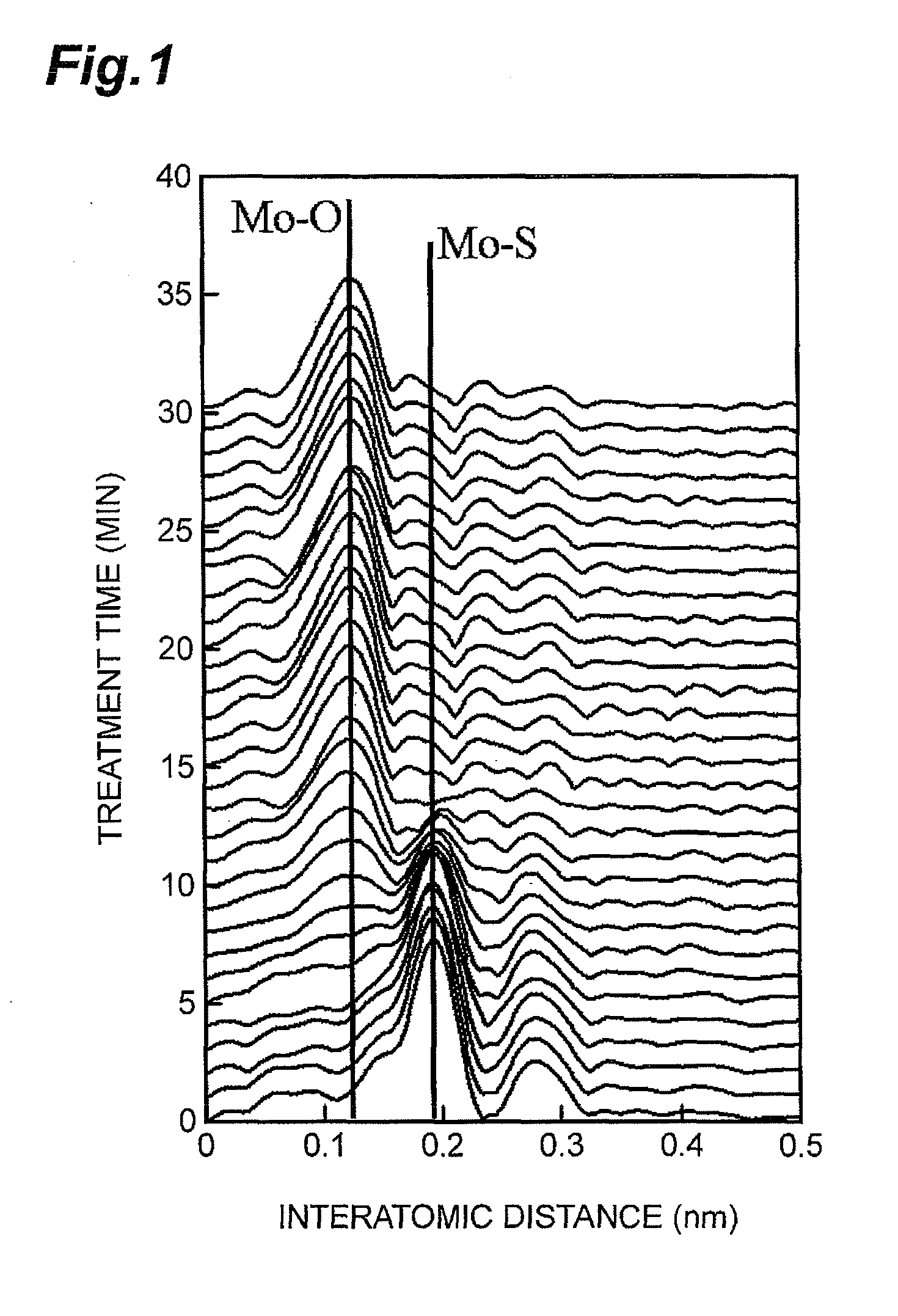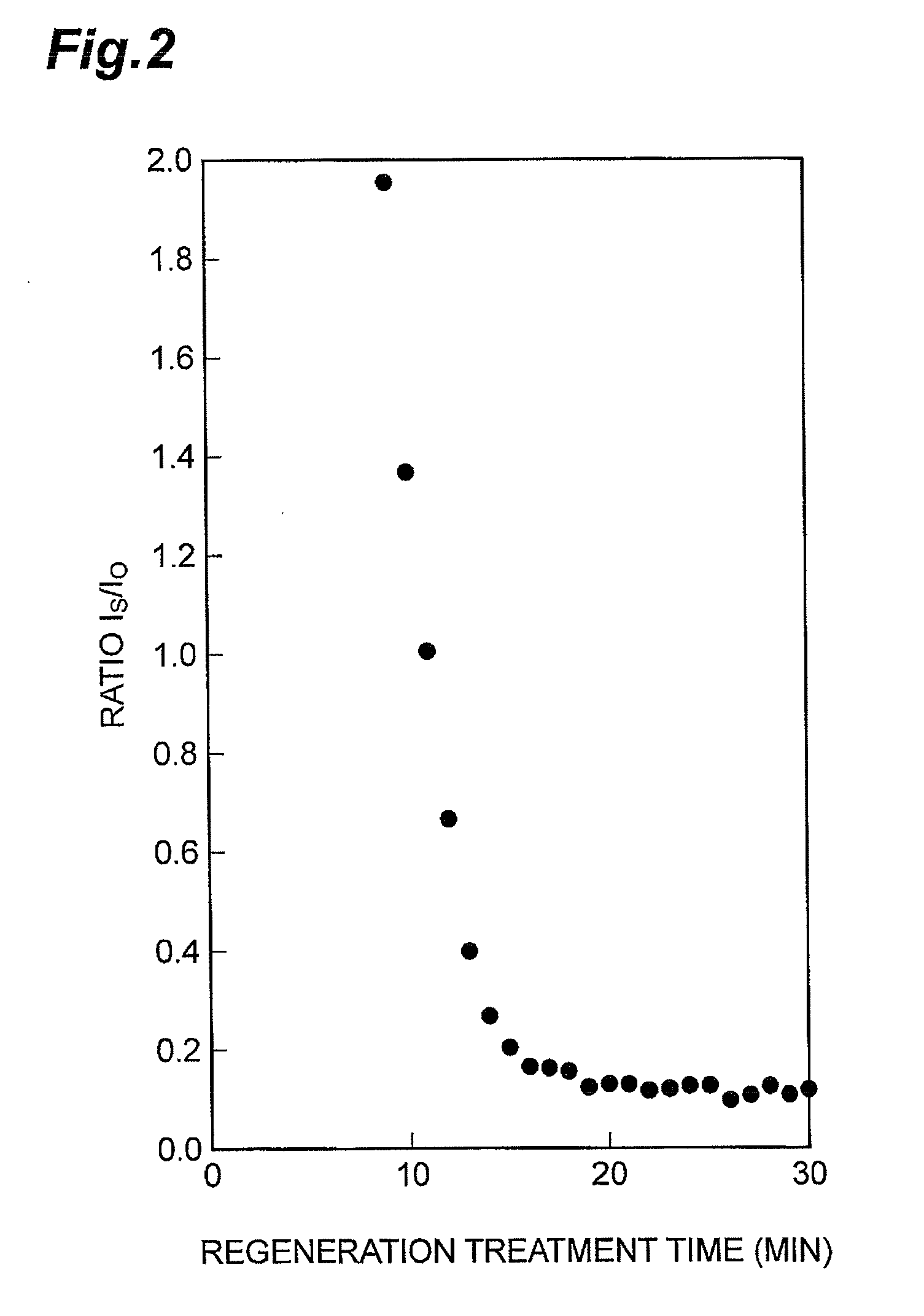Method of producing regenerated hydrotreating catalyst and method of producing petroleum products
a technology of regenerated hydrotreating and catalyst, which is applied in the direction of physical/chemical process catalyst, organic compound/hydride/coordination complex catalyst, other chemical processes, etc., can solve the problems of increasing the amount of discarded catalyst and increasing the cost of catalyst, and achieves high activity
- Summary
- Abstract
- Description
- Claims
- Application Information
AI Technical Summary
Benefits of technology
Problems solved by technology
Method used
Image
Examples
example 1
Unused Catalyst and Spent Catalyst
[0128]A catalyst in which molybdenum and cobalt as active metals were supported on an alumina support (unused catalyst, the amount of molybdenum supported (in terms of an oxide): 22.9% by mass, the amount of cobalt supported (in terms of an oxide): 2.5% by mass) was prepared. Next, part of the above catalyst was used for 2 years in a facility for the hydrotreatment of kerosene to obtain a spent catalyst.
[0129](XAFS Analysis)
[0130]For part of the above spent catalyst, an in-situ cell for XAFS measurement was installed in the XAFS Experimental Station of the Beamline NW10A of the PF-AR of the High Energy Accelerator Research Organization in order to simultaneously perform regeneration treatment and X-ray absorption fine structure analysis, and while regeneration treatment was performed, XAFS analysis was performed every minute from the start of the regeneration treatment until after a lapse of 30 minutes. From an EXAFS spectrum at a Mo K absorption ed...
example 2
[0137]XAFS analysis as in Example 1 was performed at a predetermined regeneration treatment temperature T1 ° C., and a relationship between a ratio IS / IO and treatment time was obtained. Then, a first treatment time in which the ratio IS / IO was 0.3 was taken as a minimum required treatment time a1 at the regeneration treatment temperature T1.
[0138]Then, XAFS analysis as in Example 1 was performed at a regeneration treatment temperature T2 ° C. lower than the above T1 by 100° C. (T1 −100° C.), and a relationship between a ratio IS / IO and treatment time was obtained. Then, a first treatment time in which the ratio IS / IO was 0.3 was taken as a minimum required treatment time a2 at the regeneration treatment temperature T2. The ratio a2 / a1 of the minimum required treatment time a2 to the minimum required treatment time a1 was 1.88.
[0139]In addition, XAFS analysis as in Example 1 was performed at a regeneration treatment temperature T3 ° C. higher than the above T1 by 100° C. (T1 +100° C...
example 2-1
[0142]When a required treatment time b2 at a regeneration treatment temperature T2 when the regeneration apparatus B was used was obtained by the following formula (1), b2=3.76 hours was obtained.
b2=b1×a2 / a1 (1)
[0143]When regeneration treatment was performed at the regeneration treatment temperature T2 for a treatment time of 3.76 hours using the regeneration apparatus B, the specific activity of an obtained regenerated catalyst was 0.89, and a regenerated catalyst having high activity was obtained.
PUM
| Property | Measurement | Unit |
|---|---|---|
| temperature | aaaaa | aaaaa |
| partial pressure | aaaaa | aaaaa |
| partial pressure | aaaaa | aaaaa |
Abstract
Description
Claims
Application Information
 Login to View More
Login to View More - R&D
- Intellectual Property
- Life Sciences
- Materials
- Tech Scout
- Unparalleled Data Quality
- Higher Quality Content
- 60% Fewer Hallucinations
Browse by: Latest US Patents, China's latest patents, Technical Efficacy Thesaurus, Application Domain, Technology Topic, Popular Technical Reports.
© 2025 PatSnap. All rights reserved.Legal|Privacy policy|Modern Slavery Act Transparency Statement|Sitemap|About US| Contact US: help@patsnap.com



